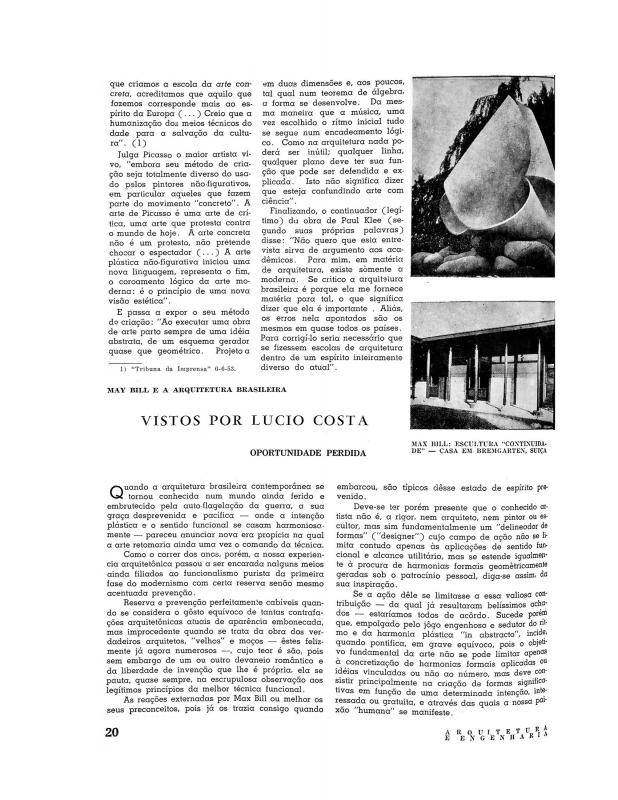After winning the Grand Prize for Sculpture at the First São Paulo biennial (1951), organized by the MAM-SP (Museu de Arte Moderna de São Paulo), Swiss architect Max Bill (1908?94) at last decided to visit Brazil when he received an official invitation from the Itamaraty (Ministério das Relações Exteriores / State Department). Upon his arrival, Bill sat for an interview with architect and art critic Flávio de Aquino (1919?87), which appeared in Manchete magazine, a weekly publication of wide circulation, and also later in HABITAT magazine, which was then led by architect Lina Bo Bardi. Both Bill’s lecture and his interview with Aquino took place at the Faculdade de Arquitetura de la Universidade de São Paulo; both unleashed an immediate backlash from Brazilian architects, whom Bill had described as strangers to the logic of the “creation of form” and what he called the “social function” of architecture.
The title of Corona’s article, “O testamento tripartido,” refers to Bill’s triple thesis, which was based on the unifying idea of Gestalt (or “good form”) and that was meant to unite “Form,” “Funktion” (function), and “Schönheit” (beauty). Coincidentally, the work that won the First Biennial had the title Dreiteilige Einheit [Triparted Unit], which had originally been designed in plaster (1947?48) so that it could be exhibited in a public garden in Zürich.
[As a complementary reading, see in the ICAA digital archive other documents on the aforementioned debate: by Flávio de Aquino “Max Bill critica a nossa moderna arquitetura” (doc. no. 1091637); by Max Bill “O arquiteto, a arquitetura, a sociedade” (doc. no. 1110329); and by Lúcio Costa “Oportunidade perdida” (doc. no. 1110331)].



